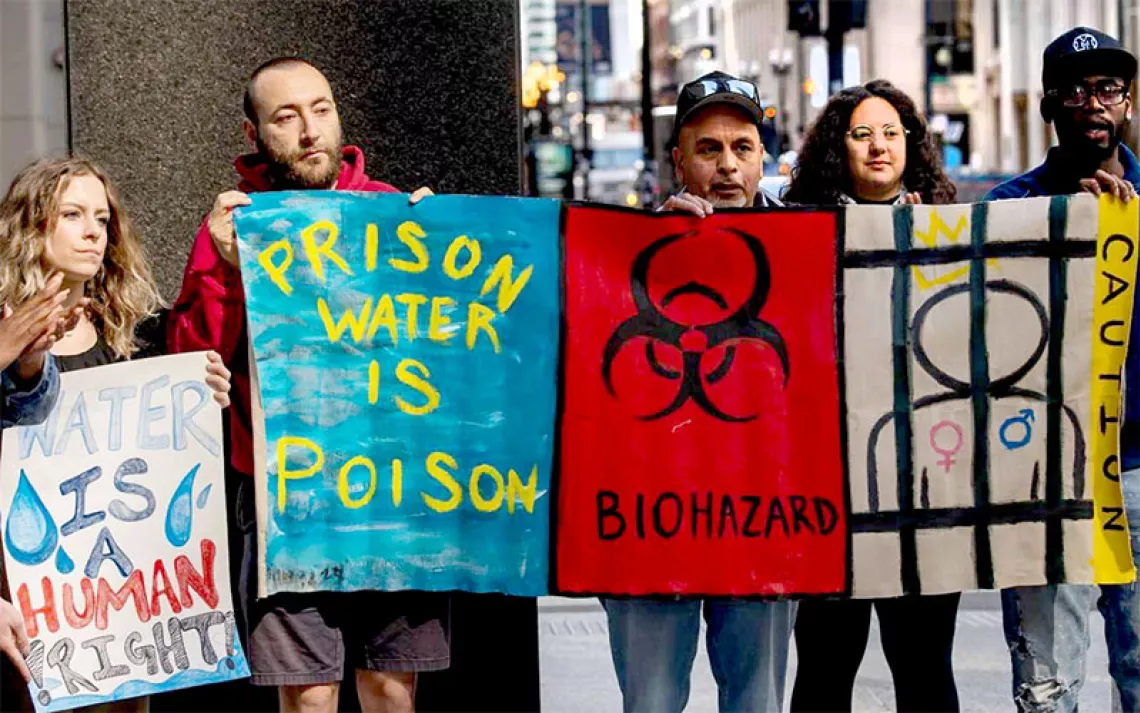From Redlining to Restorative Justice
Anti-Black racism and energy insecurity go hand in hand in America

Photo by TracieMichelle/iStock
When we talk about clean energy and affordable housing in America, what often gets left out of the conversation are the ways in which energy insecurity and racist housing practices intersect.
Just look at predominantly Black neighborhoods throughout the country, such as Detroit, Michigan, and Columbia, South Carolina. The median energy burden of Black households in Detroit is 54 percent higher than that of non-Hispanic white households. Black families who face high energy burdens have to make tradeoffs between utility payments and other necessities, and now that burden has made those same families more susceptible to the life-threatening impacts of COVID-19.
What these predominantly Black communities have in common is a practice known as redlining—a racial residential segregation policy from the 1930s. Through redlining, financial institutions can either refuse to offer mortgages or offer worse loan rates to customers looking to buy houses in neighborhoods occupied by people of color—denying hardworking families access to homeownership and the American dream.
The racist redlining practices of the housing industry created neighborhoods throughout the United States with high energy burdens, and in those areas, Black communities often show a higher prevalence of exposure to pollution and poverty. For example, due to systematic racist targeting through redlining, much of Michigan’s energy insecurity is concentrated in Detroit—the largest Black-majority city in the United States. The mayor of Detroit recently stated that “African Americans are more likely to suffer from heart disease, asthma, and chronic kidney disease, which could be making their recovery from the virus more difficult.”
In Columbia, South Carolina, many of the redlined communities are predominantly Black and experience a high energy burden. Energy expenditures remain the same regardless of income level, with some predominantly Black communities with median household incomes of $30,000 spending the same amount on energy as predominantly white communities with median household incomes of $100,000.
The United States’ long, shameful history of discriminatory housing policies and racial segregation is part of the reason why Black families are more likely to live in older, energy-inefficient homes that saddle them with higher energy burdens (6 percent energy burden or higher) than white families at almost every position in the income distribution. High energy burdens not only threaten a family’s ability to pay for energy, but it also forces already struggling families to make tough choices between paying energy bills or buying food, medicine, or other essentials.
Fifty years after the abolition of slavery, local governments still found a way to disenfranchise Black communities by legally enforcing housing segregation through exclusionary zoning laws that prohibited the sale of property to Black people. In 1917, when the Supreme Court ruled these zoning laws unconstitutional, homeowners swiftly replaced them with racially restrictive covenants—agreements between property owners that banned the sale of homes in a neighborhood to certain racial groups.
In 1934, the FHA and the Homeowners Loan Coalition (HOLC), a federally funded program created to help homeowners refinance their mortgages, introduced redlining policies in over 200 US cities including Atlanta, Chicago, Detroit, and others with large minority populations. The HOLC included in the FHA Underwriting Handbook “residential security maps,” which were color-coded according to racist, anti-Black guidelines: Green (“Best”) represented in-demand, up-and-coming neighborhoods where “professional men” lived, lacking “a single foreigner or negro”; Blue (“Still Desirable”) neighborhoods that had “reached their peak” but were thought to be stable due to their low risk of “infiltration” by non-white groups; Yellow (“Definitely Declining”) areas considered risky due to the “threat of infiltration of foreign-born, negro, or lower grade populations”; and Red (“Hazardous”) neighborhoods where “infiltration” had already occurred.
While the Fair Housing Act of 1968 explicitly ended legally sanctioned redlining policies, practices that encouraged lending discrimination, like those used by the Federal Housing Administration (FHA), were difficult to eliminate and have continued even in recent years.
We will never be successful in our movement for a healthy, safe, and sustainable planet if we do not intentionally and actively fight to dismantle racism in all of its forms. If we address structural racism and inequity in the way that we combat the climate crisis, we can stop investments in aging coal power plants and gas infrastructure and drastically reduce energy insecurity and fossil fuel pollution for Black communities.
Increasing investments in energy efficiency programs and targeting those investments to Black communities can help reduce high energy burdens, make energy bills more affordable, and vastly improve worsening health disparities caused by COVID-19. There are opportunities to work with utilities, local, and state governments, and utility commissions to set energy affordability goals and track outcomes while identifying and targeting Black communities for programs to serve. Additionally, there is an opportunity to increase a home’s value when energy efficiency upgrades are made.
Many of the same utilities that are holding on to coal plants and spending billions of dollars on gas infrastructure also serve Black customers that have the highest energy burdens in the country. Southern Company claims on its website that “racism has no place in our company and communities.” Alabama Power, a subsidiary of Southern Company, supplies electricity to 1.4 million Alabamians including the city of Birmingham. In Birmingham, a town that is over 70 percent Black, 153,330 households have a high energy burden. The 2020 ACEEE scorecard ranked Alabama Power as 52nd in energy efficiency among the country’s 52 largest utilities. The Southern Company system generates approximately 22 percent of its electric power from coal and 50 percent from natural gas.
We Energies, the electricity supplier for Milwaukee, states that it stands with its customers in rejecting all forms of racism. But in Milwaukee, one in four Black families has an energy burden at or above 15.5 percent. We Energies generates 45 percent of its electric power from coal and 24 percent from gas. The 2020 ACEEE scorecard ranked We Energies as 23rd in energy efficiency among the country’s 52 largest utilities.
An anti-racist climate movement gives us the foundation to build a more durable base of environmentalists who are focused first and foremost on their health, their wealth, and their community's survival. This is key to building the kind of lasting political power we need to make the changes that are necessary to confront the overlapping crises of these times. This is especially important for Black people who are being hit by the syndemic of COVID-19, energy burden, climate crisis, white supremacy, and state-sanctioned economic deprivation.
It will take a truly inclusive movement to remediate the earth from centuries of systematic racism and ultimately save our planet.
 The Magazine of The Sierra Club
The Magazine of The Sierra Club



